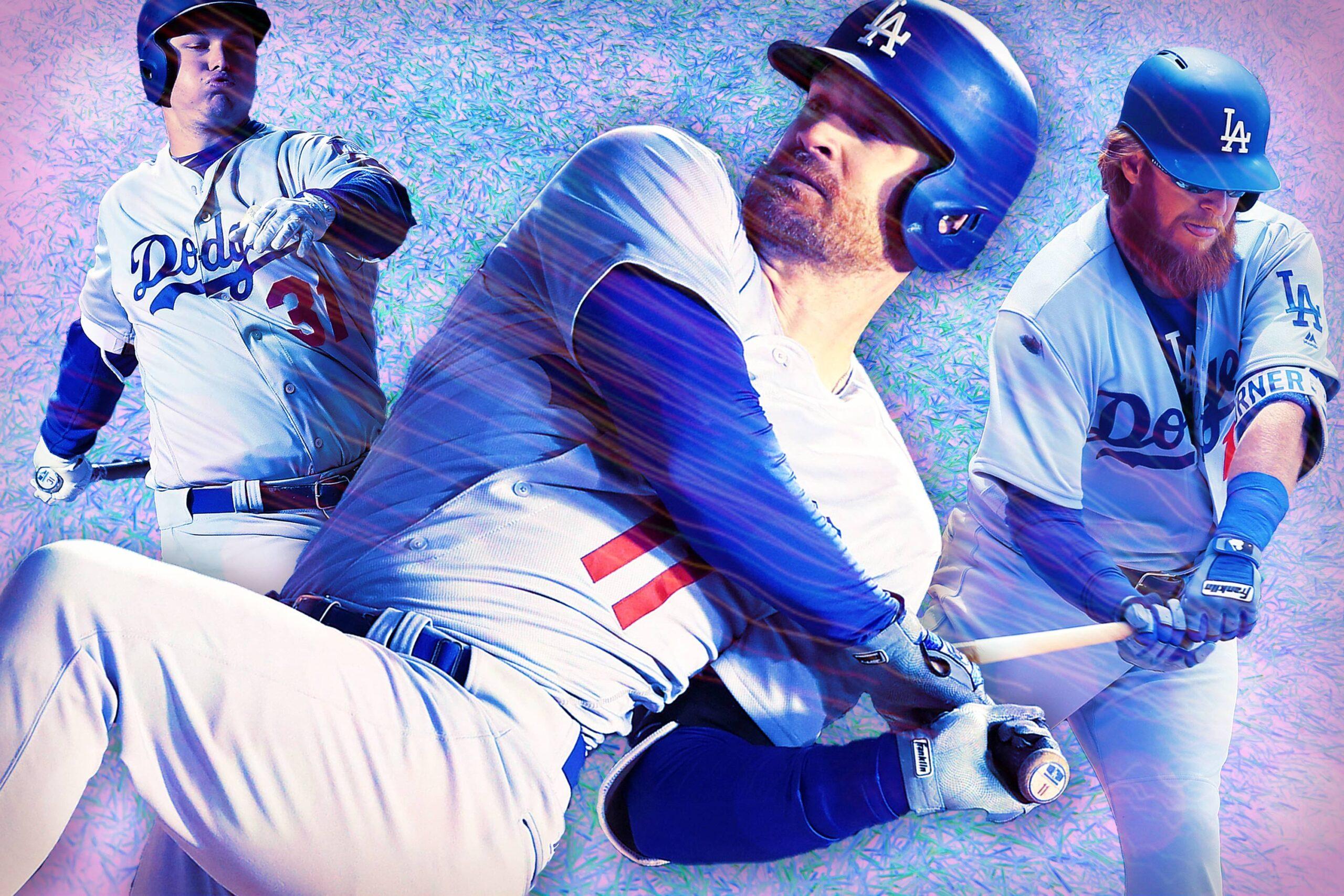
Save Vin Scully’s absence in the broadcast booth, the 2017 Dodgers are a near-perfect match for last year’s team. The stars are shining, Rich Hill is struggling with blisters, and the team has enough depth in the lineup and rotation that its 26th-through-40th men could probably compete for a wild-card berth. It’s too early for the Dodgers to worry about an 8–8 record or a recent three-game losing streak, particularly with their plus-22 run differential — a better indicator of future success than simple win-loss ratio — ranking second in the majors.
Another similarity between the two years’ teams should be greater cause for concern: an otherwise productive lineup still can’t reliably hit lefties. As Ben Lindbergh wrote last October, the 2016 Dodgers had the worst batting line against southpaws of any playoff team in MLB history. Against right-handed pitchers, Los Angeles’s park-adjusted batting line ranked second in the league, behind only the Red Sox’s; take out pitchers’ stats, and the Dodgers moved up to first. Against lefties, though, Los Angeles ranked a distant 30th, whether pitcher contributions counted or not.
It’s early yet in 2017, but a comparable pattern has emerged. The Dodgers’ wRC+ falls from a league-best mark of 130 (where 100 is league-average) against righties to 82 against lefties; only the Diamondbacks suffer a larger drop from right to left. A set of simpler contrasts reveals a similar finding: Left-handed pitchers have collected a 2.20 ERA and 1.21 WHIP against the Dodgers, versus a 5.50 ERA and 1.62 WHIP for righty pitchers; meanwhile, Los Angeles is 5–2 in games when the opponent starts a right-hander and only 3–6 against lefties.
Yet in the Dodger clubhouse, the public attitude, at least, is unconcern about this ongoing dichotomy. "I think you guys are making it a bigger deal than anybody else," utility player Kike Hernández said after the Dodgers’ 4–3 loss to Colorado on Tuesday. "It’s still April. If we’re still not hitting lefties or righties in September, then it’s a different story, but we’re still in April and we’re not going to make a big deal out of it or get in our heads."
Hernández is one of a number of Dodgers who play primarily in a platoon; the plan this year was for Hernández and Franklin Gutiérrez to start against lefties while Joc Pederson and Andrew Toles received the bulk of the playing time against right-handed pitchers. This opportunistic setup explains how the Dodgers have ranked among the top-5 teams in each of the last two seasons in the percentage of plate appearances in which they hold the platoon advantage, even with just one switch hitter (catcher Yasmani Grandal) in the lineup.
The Dodgers’ main issue against lefties is that outside the platoon-restricted players, the team’s everyday bats almost uniformly fare worse against lefties. Adrián González’s career OPS against same-handed pitchers is 22 percent worse than his overall number; Corey Seager’s is 30 percent worse, and Joc Pederson has the defensive talent and speed to play every day, but is stuck in the skeleton of a platoon because his is 44 percent worse. Those disparities are all greater than the median shift, which is 21 percent for active left-handed hitters.
Even the Dodgers’ best right-handed hitters experience the rare reverse platoon split, hitting better against righties than opposite-handed pitchers: Of the 160 active righty batters with at least 1,000 career plate appearances, Justin Tuner’s OPS against lefties is the second-worst when compared to his overall OPS. Yasiel Puig, too, is one of only 27 such batters who have fared worse against lefties in their careers.
L.A.’s chance for improved offense against lefties stems in part from the hope that some of the young bats — Seager and Pederson in particular — can make strides against southpaws as they gain more MLB experience and their platoon splits normalize. "It’s competing," manager Dave Roberts said about what he looks for in Pederson, who typically sits against lefties but started against the Rockies’ Kyle Freeland on Tuesday. "For him to keep his shoulder in there and use the whole field, and so far, small sample, but we’ve seen that up to this point. As I continue to see that at-bat quality be consistent, then the more opportunities he’ll get."
Along with their nonchalance about struggles against lefties — "there’s a lot made of it," Roberts said — both the Dodgers’ manager and position players explained that a batter’s goals should be the same, regardless of pitcher handedness. "I’m not really thinking about that, just going out there trying to take good ABs," backup catcher Austin Barnes said, adding that his approach in a given plate appearance depends "more [on] pitcher to pitcher than lefty or righty."
A second reason for hope, new blood, seems more specious at the moment, as offseason additions with past success against lefties have already been part of the Dodgers’ annual injury wave. Gutiérrez has an expansive injury history and made his first 2017 trip to the disabled list with a strained hamstring last week, and Forsythe suffered a broken toe from a hit by pitch on Tuesday, which will sideline him for several weeks. Both players have hit lefties hard in the past; if they miss extended time — particularly Forsythe, who has hit lefties 28 percent better in his career — L.A. will trot out the exact same group that never flipped the switch against lefties last season.
To the extent that the Dodgers’ continued weakness against lefties has suppressed their overall record, the good news is that the schedule will lighten. Thus far in 2017, a whopping 44.7 percent of Los Angeles plate appearances have come against lefties. That percentage is bound to drop: No other team reaches even 40 percent now, and last season, the top mark at the end of the year was Seattle at 34.2 percent. (The Dodgers were fifth, at 29.3.)
This disadvantage won’t stop mattering completely, though, as southpaws populate the pitching staffs of the Dodgers’ most frequent opponents. Los Angeles has the highest proportion of innings thrown by lefties this year (49.6 percent), which makes sense with Clayton Kershaw, Hyun-jin Ryu, and either Hill or Alex Wood in the rotation. Besides the Dodgers, about one quarter (25.8 percent) of MLB innings have come from southpaws this year, but among the other four NL West teams, that ratio rises to a third (33.4 percent). Colorado ranks sixth, San Francisco eighth, Arizona 11th, and San Diego 14th in left-handed innings percentage — in other words, the Dodgers will face a lot of lefties the rest of the season.
In the next week alone, they face Arizona’s Robbie Ray, who struck out 10 Dodgers in six innings on Monday, and San Francisco’s Madison Bumgarner and Matt Moore, both of whom have dominated L.A. in past meetings. Given the Dodgers’ performance against lefties of any stripe this year, though, it might not matter much how talented opposing pitchers are; they might twirl a shutout anyway.
The Padres’ Clayton Richard pitched eight scoreless innings against the Dodgers in the second game of the season but has a 6.00 ERA with four home runs allowed in his other two starts this year. Colorado’s Freeland allowed six runs to San Diego but has held the Dodgers to two in 10 innings across a pair of starts. And relievers the likes of Chris Rusin and Jorge De La Rosa have struck out 18 Dodgers, to just three walks and one home run allowed.
One of baseball’s curiosities is that, year after year, contending teams can fail to fix persistent problems no matter the resources they devote to addressing them; think the Tigers’ annual bullpen woes or the Rays’ inability to find a well-rounded and capable catcher. It’s early, but the Dodgers appear to have fallen into the same trap, and they might spend all of 2017 making opposing southpaws look like Clayton Kershaw when they take the mound.
All stats other than the Dodgers’ record and run differential are current through Tuesday’s games.

